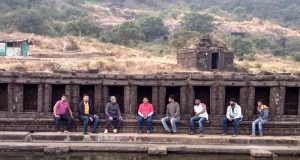Tappeta Gullu: Andhra Traditional Dance
Andhra Pradesh is a land of great culture and tradition and has the best display of the ideal classical traditions that exist in this part of India. With many forms of dance and related arts, this is one state that has the most spectacular travel delights in the areas of culture and other kinds of local lifestyles.

Tappeta Gullu is one form of devotional dance from Andhra Pradesh that is very famous in the areas of Srikakulam, Vishakapatnam, Vizianagram, etc. This was a dance that in ancient times was performed by the shepherds and cowherds so that they could use the Rain Goddess Gangamma. Today the dance is being performed in all the festivals in the village and is celebrated in Her Honour. The tempo, the rhythm, and the energy of the dance are very enthralling. The Tappeta Gullu has songs that mostly praise the Indian God Lord Vishnu. The dance depicts stories from Mahabharata, Ramayana, Bhagavata, etc. The dance also shows the lives of the ten incarnations of Lord Vishnu.
Tapetta Gullu in the initial stages is like a ritual where a man goes around the village with a decorative pot of water. This pot of water symbolizes Goddess Gangamma. Then the second part of the dance is at night. Tapetta Gullu is enacted by a group of twelve to thirty men who dance slowly to the rhythm of the dance. Dressed in bright colours, in a shirt and a loincloth and a headgear, the men also wear ankle bells. The tappetta or the gundlu is hung on the chest. This is a musical instrument that is very much like the drum. The Tappeta gull needs a lot of muscle power and skill. The main feature of the dance is that while dancing the artists show lot of acrobatic skills. The dancers also stand one above the other and display their skills while they perform the dance by standing on the shoulders of each individual leading to the shape of a gopuram or a tree.
This devotional dance invokes the rain God and is very popular for the way it showcases the rhythm, tempo, and energy. The dance has around 15 -20 artists who have drums on their necks and the entire scene is very hypnotizing.
This folk dance gets its origin from the cultures of the folk villages and have made a great impact, especially after the 19th century. The culture seeped into this land from the western countries and slowly made a place for itself. The ballads, dance, and folk dances are the mainstay of this dance and the theatrical representation is something to see and enjoy.
Tappeta Gullu has become a great event in marriages and is normally preferred among other dances. The Gangamma festival normally begins on Bhishma Ekadashi day and is normally involved the entire village taking part in it. The Tappeta Gullu is a magical representation of ancient traditions and culture.
The ritualistic Ghatam is the main feature of the dance. During the Dasavatara festival the dance is performed with great gusto.
There are dance troupes who perform Tappeta gullu throughout India and this Yadav dance today has spread across the country like magic. Andhra Pradesh is a place where the tribals have their own folk dances. This saintly dance performance only ensures that the ancient culture and tradition are kept intact in the rural as well as the urban areas.
Tappeta Gullu is a living example of existing culture and tradition in the country. See it to enjoy it.


